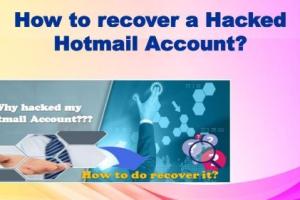Ultimate Guide to Recovering and Securing Your Hacked Hotmail Account

-
Quick Links:
- Introduction
- Understanding Hacking
- Signs of a Hacked Hotmail Account
- Step-by-Step Recovery Process
- Securing Your Account
- FAQs
- Conclusion
Introduction
In today's digital age, email accounts are a primary target for hackers. Hotmail, now integrated with Outlook, is no exception. If you find yourself locked out or suspect that your account has been compromised, acting swiftly is crucial. This guide will walk you through the recovery process and provide strategies to secure your Hotmail account effectively.
Understanding Hacking
Hacking refers to unauthorized access to computer systems and networks. Cybercriminals often exploit vulnerabilities in software, use phishing scams, or engage in social engineering tactics to gain access to personal accounts.
Types of Hacking
- Phishing: Deceptive emails that appear legitimate, tricking users into providing personal information.
- Malware: Malicious software that can compromise your device and access your data.
- Brute Force Attacks: Automated attempts to guess passwords until the correct one is found.
Signs of a Hacked Hotmail Account
Identifying a hacked account can be challenging. Here are some signs to look for:
- Unusual activity, such as emails sent from your account that you did not send.
- Inability to log in due to password changes.
- Notifications of login attempts from unrecognized devices or locations.
- Changes to your account settings without your consent.
Step-by-Step Recovery Process
If you suspect your Hotmail account has been hacked, follow these steps to recover it:
Step 1: Attempt to Log In
Try logging in with your last known password. If successful, change your password immediately.
Step 2: Use the Account Recovery Form
If you cannot log in, use the Microsoft Account Recovery Form. You’ll need to provide information that only you would know.
Step 3: Verify Your Identity
Microsoft will ask you to verify your identity through alternative methods, such as a recovery email or phone number linked to your account.
Step 4: Change Your Password
Once your identity is verified, change your password to a strong, unique one that combines letters, numbers, and symbols. Avoid using easily guessable information.
Step 5: Review Account Activity
Check your account activity for any unauthorized actions. Look for unfamiliar emails sent from your address and report them as necessary.
Step 6: Secure Your Account
After recovery, take immediate steps to secure your account further, including enabling two-factor authentication (2FA).
Securing Your Account
Prevent future hacking attempts by following these best practices:
1. Enable Two-Factor Authentication
Two-factor authentication adds an extra layer of security. You’ll need to provide a second form of verification, such as a text message code, in addition to your password.
2. Use a Password Manager
A password manager can help you create and store complex passwords. This reduces the risk of password reuse across accounts.
3. Regularly Update Your Password
Change your password every few months, and avoid using personal information that can be easily guessed.
4. Be Wary of Phishing Attempts
Always double-check the sender’s email address and avoid clicking on suspicious links or downloading attachments from unknown sources.
5. Keep Software Updated
Ensure that your operating system and antivirus software are up to date to protect against the latest security vulnerabilities.
FAQs
1. What should I do if I can’t recover my Hotmail account?
If recovery fails, contact Microsoft Support for further assistance.
2. How can I tell if my email has been hacked?
Look for unusual activity, such as emails sent that you didn’t compose or changes to account settings.
3. Is it safe to use public Wi-Fi to access my email?
Public Wi-Fi can be risky. Use a VPN for a secure connection when accessing your email on public networks.
4. How often should I change my password?
Change your password every 3 to 6 months for optimal security.
5. What makes a strong password?
A strong password should be at least 12 characters long and include a mix of uppercase letters, lowercase letters, numbers, and symbols.
6. Can I recover my account if I lost access to my recovery email?
You may still recover your account using alternative recovery options provided by Microsoft.
7. What is two-factor authentication and how does it work?
Two-factor authentication requires two forms of verification, typically your password and a code sent to your phone.
8. How can I prevent my account from being hacked again?
Use strong passwords, enable two-factor authentication, and be cautious of phishing attempts.
9. Should I use the same password for different accounts?
No, using the same password across multiple accounts increases vulnerability. Use a password manager to keep track of different passwords.
10. Can I report a hacked account to authorities?
Yes, you can report hacking incidents to local authorities and file a complaint with your email provider.
Conclusion
Recovering a hacked Hotmail account can be daunting, but following the steps outlined in this guide will help you regain control and secure your account. Remember, prevention is key in avoiding future hacks, so always stay vigilant and informed about online security.